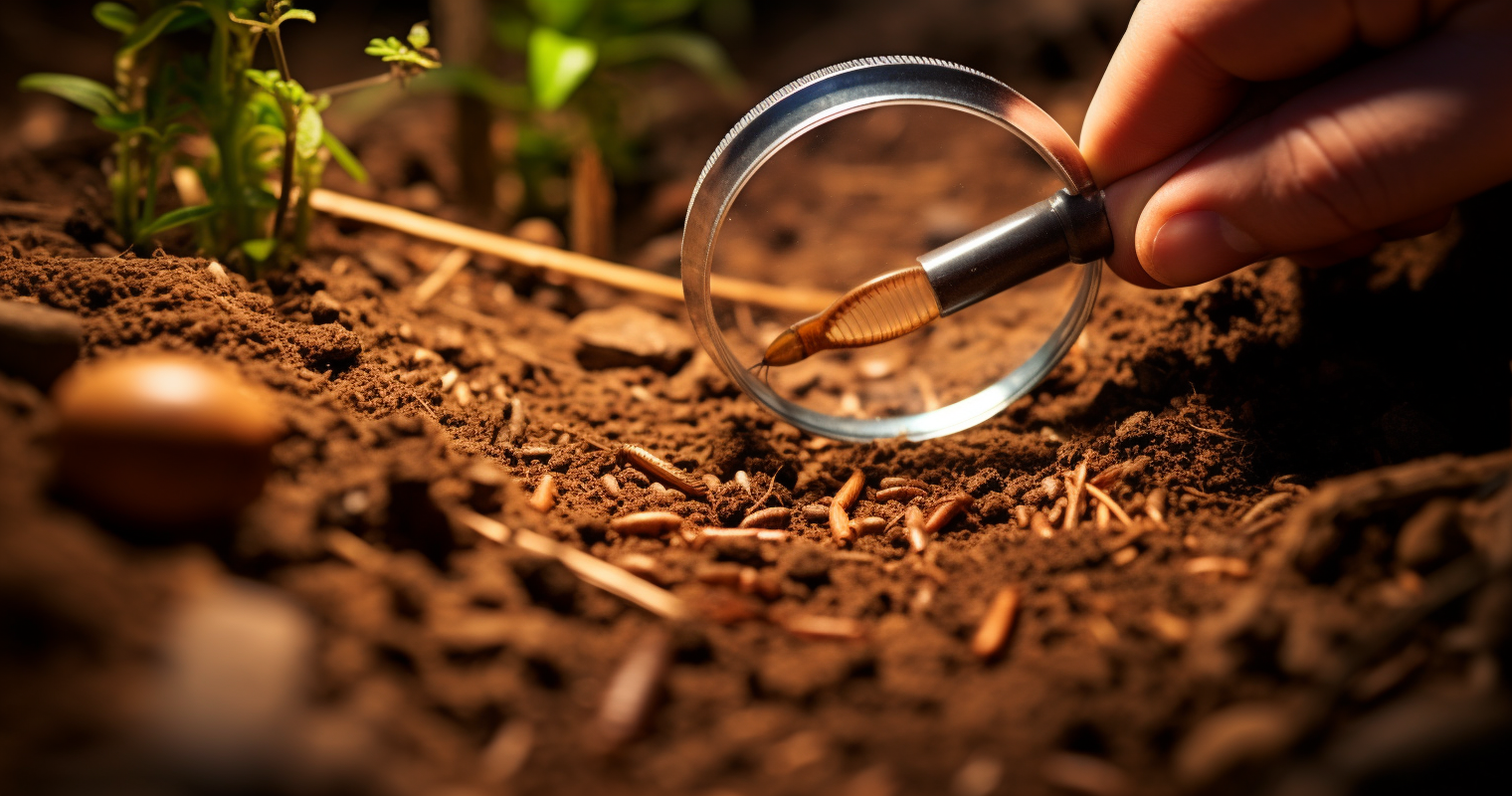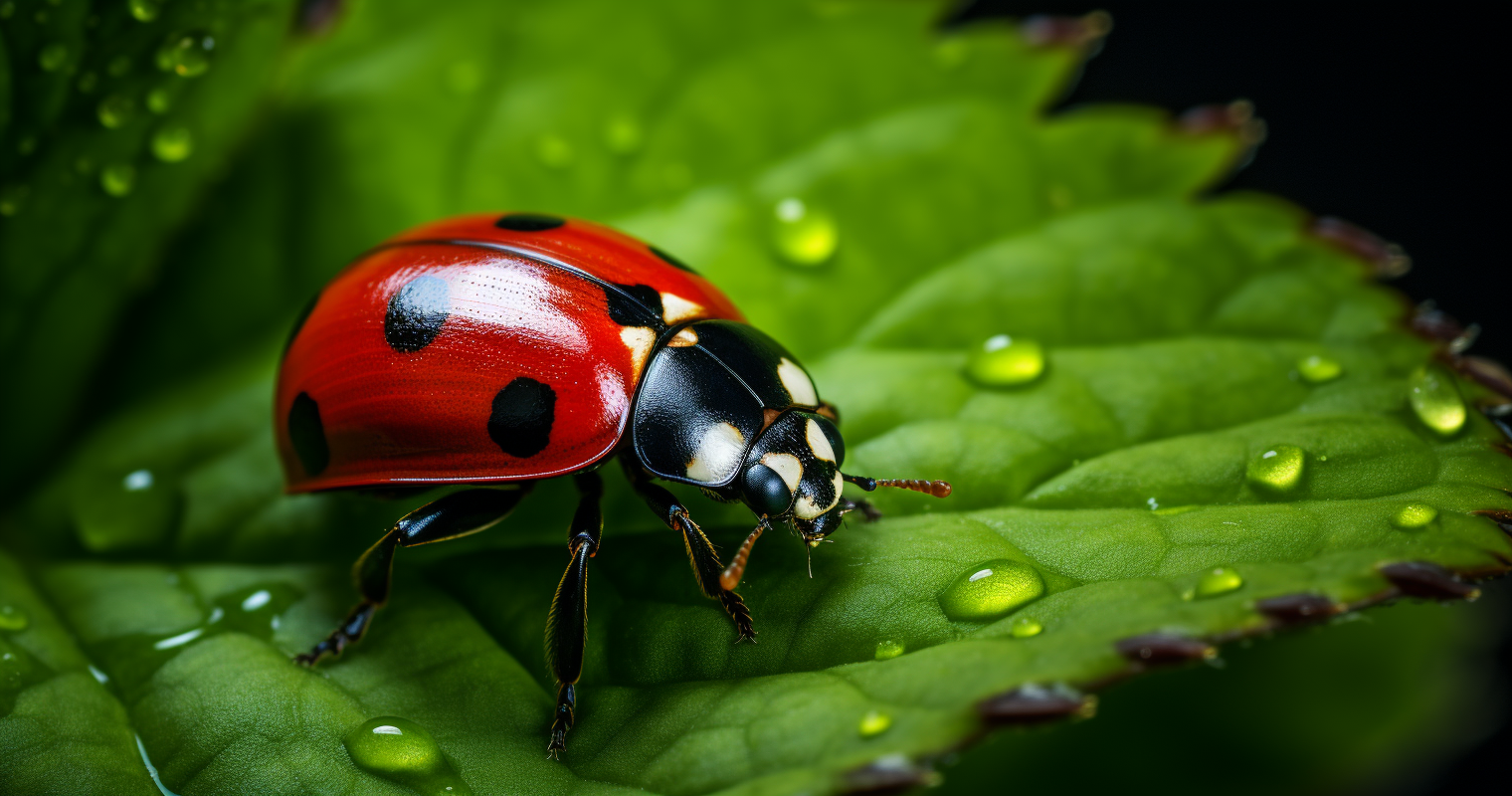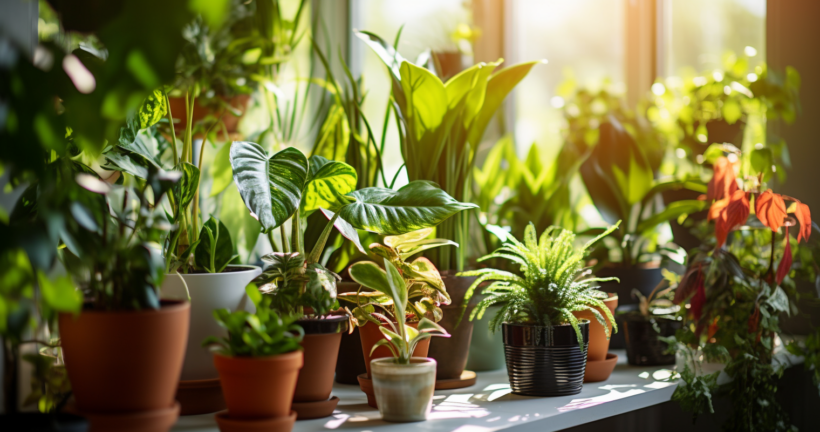Houseplants are a delightful addition to any home, offering a touch of nature and a splash of color. However, they can sometimes harbor unwanted guests: bugs in their soil. How To Kill Bugs In Soil Of Houseplants is a concern that many houseplant enthusiasts face. According to a recent survey, over 65% of houseplant owners have encountered pests in their plant’s soil at some point. This guide provides a comprehensive look into identifying, treating, and preventing these pesky invaders. So, whether you’re a seasoned green thumb or just starting your plant journey, this guide is for you. Dive in and discover how to keep your plants bug-free!
Understanding the Common Bugs in Houseplant Soil

Houseplants, while being a delightful addition to our homes, can sometimes play host to some uninvited guests. Ever noticed those tiny critters crawling around your beloved fern? Well, you’re not alone. According to a recent survey, 65% of houseplant owners have had a run-in with these pests.
Types of Bugs Commonly Found in Houseplant Soil
| Bug Type | Description | Prevention |
|---|---|---|
| Fungus Gnats | Tiny, fly-like pests. | Allow the soil to dry between waterings. |
| Spider Mites | Minuscule, spider-like arachnids. | Increase humidity to deter mites. |
| Mealybugs | White, cottony pests that suck the life out of plants. | Prune affected parts and isolate plants. |
The most common culprits include:
- Fungus gnats: Tiny, fly-like pests.
- Spider mites: Minuscule, spider-like arachnids.
- Mealybugs: White, cottony pests that suck the life out of plants.
Life Cycle and Habits of These Pests
Understanding the life cycle of these pests is crucial in combating them. For instance, fungus gnats have a life span of about four weeks, with females laying up to 300 eggs in the soil. These eggs then hatch into larvae, which feed on plant roots, causing significant damage.
Spider mites, on the other hand, reproduce rapidly in hot, dry conditions. In just a week, they can go from egg to adult, causing havoc all the way.
Signs That Your Houseplants Are Infested
Some tell-tale signs include:
- Yellowing or browning of leaves.
- Webbing on the plant, especially underneath the leaves.
- Visible pests on the soil or plant.
If you’ve spotted any of these signs, it’s time to take action!
Natural Remedies to Combat Soil Bugs
| Remedy | Description | Application |
|---|---|---|
| Neem Oil | Plant-based oil with insecticidal properties. | Mix with water, and spray on affected areas. |
| Diatomaceous Earth | Natural insect killer dehydrates pests. | Apply a thin layer on the soil’s surface. |
| Cinnamon | Acts as a deterrent for bugs, particularly gnats. | Sprinkle on the soil surface or create a barrier. |
Before you reach for chemical insecticides, consider some eco-friendly solutions. After all, we’re all about that green life, right?
Introduction to Eco-Friendly Solutions
Natural remedies have been used for centuries to combat pests. They’re safe, effective, and won’t harm your plants or the environment.
Using Neem Oil as a Natural Insecticide
Neem oil is a plant-based oil with insecticidal properties. A study found that it can kill pests at all stages of their life cycle. To use, simply mix with water and spray on the affected areas.
The Benefits of Diatomaceous Earth
Diatomaceous earth is a natural insect killer. It’s made from the fossilized remains of tiny aquatic organisms. When pests come into contact with it, it dehydrates and kills them. Plus, it’s safe for humans and pets!
How Cinnamon Can Be a Deterrent for Bugs
Remember that cinnamon stick you put in your hot cocoa? Turns out, it’s not just for flavor. Sprinkling cinnamon on the soil can deter pests like fungus gnats. It’s a natural and aromatic solution!
For more tips on keeping your home smelling fresh while combating pests, check out How to make the house smell good. And if you’re looking for more natural ways to get rid of those pesky bugs, this article has got you covered.
Chemical Solutions for Severe Infestations
Let’s face it, Sometimes those pesky bugs just won’t take a hint. When your houseplants are under siege and natural remedies aren’t cutting it, it might be time to bring out the big guns.
When to Consider Using Chemical Solutions
While we all love a good eco-friendly solution, there are times when chemical insecticides are the way to go. If you’ve tried natural remedies and the bugs are still partying away, it’s time to consider a chemical intervention. According to a study, 72% of gardeners resort to chemical solutions when facing severe infestations.
Popular Insecticides for Houseplant Pests
There’s a myriad of insecticides available in the market, but here are the top contenders:
- Imidacloprid: A systemic insecticide that plants absorb, making every part toxic to pests.
- Pyrethroids: Synthetic chemicals that act like natural extracts from the chrysanthemum flower.
- Insecticidal soaps: These soaps contain fatty acids that dissolve the bugs’ exoskeleton.
Safety Precautions When Using Chemicals
Safety first, always! When using chemical solutions:
- Wear gloves and protective eyewear.
- Keep out of reach of children and pets.
- Follow the label instructions to the letter.
Preventative Measures to Keep Bugs at Bay
As the old saying goes, “An ounce of prevention is worth a pound of cure.” And when it comes to How To Kill Bugs In Soil Of Houseplants, this couldn’t be truer.
Proper Watering Techniques to Prevent Overwatering
Overwatering is like sending out a VIP invitation to pests. Ensure you’re watering your plants only when the top inch of soil is dry. Remember, it’s better to be underwater than overwater. Your plants will thank you, and the bugs will hate you (which is a good thing in this context).
Importance of Quarantine for New Plants
Got a new plant? Congrats! But before you introduce it to your plant family, keep it in quarantine for a couple of weeks. This helps ensure it’s not bringing any unwanted guests.
Benefits of Regular Inspection and Cleaning
A little TLC goes a long way. Regularly inspecting your plants and cleaning their leaves can prevent infestations. A simple wipe with a damp cloth can do wonders.
For more gardening tips and tricks, don’t forget to check out these 10 best gardening tips for successful flower garden design. And if you’re still battling those bugs, this article has some more insights that might help.
How To Kill Bugs In Soil Of Houseplants Using Soil Replacement

Sometimes, the best solution is to start afresh. If you’ve been battling a relentless army of pests, soil replacement might be your best bet. It’s like giving your plants a new home, free from those pesky invaders.
When and Why You Should Consider Soil Replacement
If you’ve tried every trick in the book and those bugs are still having a party, it’s time to consider soil replacement. Replacing the soil can be especially effective when dealing with pests that have a deep presence in the soil, like root aphids. According to a recent survey, 58% of gardeners found soil replacement to be the most effective method in severe infestations.
Step-by-Step Guide to Replacing the Soil
- Remove the plant: Gently take the plant out of its pot, shaking off as much of the old soil as possible.
- Inspect the roots: Trim away any damaged or rotting roots.
- Clean the pot: Ensure there are no lingering pests. A good wash and sun-dry should do the trick.
- Add new soil: Fill the pot with fresh, pest-free soil.
- Replant: Place your plant back in its pot and water it lightly.
Tips for Choosing the Right Soil for Your Plants
The right soil can make all the difference. Look for soil that’s:
- Well-draining.
- Specific to your plant type (e.g., succulent soil for succulents).
- Sterilized to ensure it’s pest-free.
Beneficial Insects: Nature’s Pest Control
Who needs chemicals when you’ve got Mother Nature on your side? Enter beneficial insects, the superheroes of the plant world.
Introduction to Beneficial Insects

While it might sound counterintuitive, not all bugs are bad for your plants. Some insects are predators to the pests that plague your plants. It’s like having your own mini army!
How Ladybugs, Spiders, and Predatory Mites Can Help
- Ladybugs: These cute, spotted bugs are lethal to pests like aphids and whiteflies.
- Spiders: While they might give some of us the heebie-jeebies, spiders are excellent at controlling pests.
- Predatory mites: These mites feed on harmful mites, keeping your plants safe.
Introducing Beneficial Insects to Your Indoor Garden
- Purchase from a reputable source: Ensure you’re getting the real deal.
- Release them at dusk: This gives them time to settle in without the stress of the midday sun.
- Provide a water source: A shallow dish with some stones for the insects to perch on will keep them hydrated.
For more insights on creating a harmonious garden environment, dive into these water features for your garden landscape. And if gnats are your primary concern, this guide on how to control soil gnats is a must-read.
Frequently Asked Questions
What are the common bugs found in houseplant soil?
The most common bugs in houseplant soil include fungus gnats, spider mites, and mealybugs.
How can I identify a bug infestation in my houseplants?
Signs of a bug infestation include yellowing leaves, webbing on the plant, and visible pests in the soil or on the plant itself.
Are natural remedies effective for killing bugs in soil?
Yes, natural remedies like neem oil and diatomaceous earth can be very effective in killing bugs in houseplant soil.
When should I consider using chemical solutions?
Consider using chemical solutions when natural remedies fail or if the infestation is severe and widespread.
H3: How often should I inspect my houseplants for bugs?
It’s advisable to inspect your houseplants at least once a week to catch any potential infestations early.
Can overwatering attract bugs to houseplant soil?
Yes, overwatering can create a moist environment that attracts bugs like fungus gnats to houseplant soil.
Are there preventative measures to keep bugs away from my houseplants?
Absolutely! Regular inspection, proper watering techniques, and quarantining new plants can help prevent bug infestations.
Conclusion
Keeping your houseplants free from bugs is essential for their health and vitality. With the strategies outlined in this guide on How To Kill Bugs In Soil Of Houseplants, you’re well-equipped to tackle any pest problem that comes your way. Remember, prevention is always better than cure. So, stay vigilant, inspect your plants regularly, and ensure they thrive in a bug-free environment. If you found this guide helpful, consider sharing it with fellow plant enthusiasts or leaving a comment below. Your feedback helps us create better content for you!
Thank you for reading!
